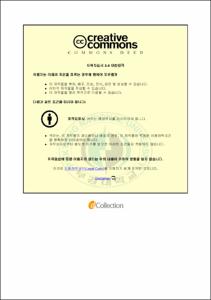船舶用 에폭시 塗料의 再塗裝 間隔 向上을 위한 塗膜 性能評價 硏究
- Alternative Title
- Study on the Performance Test of Epoxy Paint to Enhance Re-coating Interval for Marine Coatings
- Abstract
- Epoxy paint is used in over 80% of the shipbuilding process, especially in the water ballast tank (W.B.T). When top coat is applied, it is necessary to prevent poor adhesion of the top coat caused by a short re‐coating interval. For this, a work to remove paint film using power tools, etc. is added in the succeeding coating process. Furthermore, most of epoxy paint produced currently is corrosion proof paint with solid content not higher than 60%, the application of which is limited, and products with solid content of over 70∼80% are produced but their re‐coating interval is limited to no longer than a month. By saving additional coating work in the succeeding process due to the excess of recoating interval in shipyards, we expect many significant effects including the reduction of labor cost, decrease in VOCs emission, and prevention of musculoskeletal diseases in the workers.
Thus, this study purposed to assess the re-coating interval, crack resistance, electrochemical impedance spectroscopy (EIS), etc. of fatty acid‐modified epoxy resin containing silane, and to improve adhesive force and mechanical properties by mixing bisphenol-A epoxy resin that has relatively high molecular weight.
Moreover, this study aimed to secure reliability through an experiment using a water ballast tank simulation system according to the Performance Standard for Protective Coatings (PSPC) for ships prescribed by the International Maritime Organization (IMO).
- Issued Date
- 2015
- Awarded Date
- 2015. 2
- Type
- Dissertation
- Publisher
- 부경대학교 일반대학원
- Alternative Author(s)
- Kang, Ji Hun
- Affiliation
- 부경대학교 공과대학 공업화학과
- Department
- 대학원 공업화학과
- Advisor
- 박진환
- Table Of Contents
- 1. 서론 1
2. 이론적 배경 4
2.1 유기도막에 의한 방식 기구 4
2.2 유기도막의 노화 메커니즘 7
2.2.1 물의 침투성과 도막하 부식 7
2.2.2 Wet adhesion / Osmosis / Blistering 7
2.2.3 음극 박리 (Cathodic delamination) 8
2.3 에폭시 수지 도료 9
2.3.1 에폭시 수지의 경화 및 반응 메커니즘 9
2.3.2 에폭시 수지의 특징 12
2.4 교류 임피던스에 대한 이론 13
2.4.1 교류 임피던스의 기초 13
2.4.2 교류 임피던스의 이론 14
2.4.3 부식계의 등가회로와 교류 임피던스 특성 21
2.4.3.1 부식계의 등가회로 22
2.4.3.2 유기 도막의 등가회로 24
2.4.3.3 물 흡수에 의한 도막 내부의 임피던스 특성 28
2.4.3.4 교류 임피던스 측정결과 도시 방법 29
2.4.4 교류 임피던스 측정 원리 34
2.4.5 교류 임피던스 측정법을 이용한 도장강판의 노화과정 관찰 36
2.4.6 도막의 노화에 따른 등가회로와 교류 임피던스 diagram 39
2.4.7 임피던스 값에 따른 도막의 방식 성능 41
2.5 Water ballast tank 42
3. 실험 방법 45
3.1 도료의 제조 46
3.1.1 실란이 도입된 지방산 변성 에폭시 수지 48
3.1.2 실란이 도입된 지방산 변성 에폭시 수지의 혼합 48
3.2 시험편 제작 50
3.2.1 내크랙성 시험 시편 54
3.2.2 도막방청성능 시험 시편 51
3.2.3 Water ballast tank simulation system 시험 시편 52
3.3 내크랙성 시험 54
3.4 도막방청성능 시험 56
3.4.1 NORSOK M 501 cyclic test 56
3.4.2 교류 임피던스의 측정 57
3.5 Water ballast tank simulation system test 59
3.6 도막 부착력 시험(Pull-off test) 63
3.7 Creepage analysis(Undercutting from scribe) 64
4. 결과 및 고찰 65
4.1 실란이 도입된 지방산 변성 에폭시 수지 65
4.1.1 내크랙성 시험 결과 65
4.1.2 도막방청성능 시험 결과 67
4.1.3 Water ballast tank simulation system 시험 결과 68
4.1.3.1 부착력 시험 결과(Pull-off test) 69
4.1.3.2 Creepage analysis 결과(Undercutting from scribe) 70
4.2 실란이 도입된 지방산 변성 에폭시 수지의 혼합 72
4.2.1 내크랙성 시험 결과 72
4.2.2 도막방청성능 시험 결과 74
4.2.3 Water ballast tank simulation system 시험 결과 75
4.2.3.1 부착력 시험 결과(Pull-off test) 76
4.2.3.2 Creepage analysis 결과(Undercutting from scribe) 77
5. 결론 79
References 81
- Degree
- Master
- Files in This Item:
-
-
Download
 船舶用 에폭시 塗料의 再塗裝 間隔 向上을 위한 塗膜 性能評價 硏究.pdf
기타 데이터 / 5.35 MB / Adobe PDF
船舶用 에폭시 塗料의 再塗裝 間隔 向上을 위한 塗膜 性能評價 硏究.pdf
기타 데이터 / 5.35 MB / Adobe PDF
-
Items in Repository are protected by copyright, with all rights reserved, unless otherwise indicated.